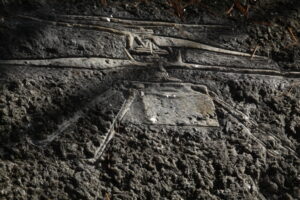A carving I finished in Phippsburg features NASA’s Ingenuity Mars Helicopter. The piece has sparked debate within the art and environmental communities, as a lot of my pieces have. There is a debate to be had about whether nature is to be left alone, although the work that I do works to memorialize the surrounding areas of the rocks on which I carve. Although, this specific artwork depicts Ingenuity exploring Mars, which raises similar questions about human disruption of natural landscapes—even beyond Earth.

Critics argue that the helicopter’s presence symbolizes humanity’s growing tendency to interfere with untouched environments, even on distant planets. Supporters, however, see the art as a celebration of human innovation and exploration. The clash of viewpoints has made the piece a focal point for discussions on technology’s impact on nature, highlighting how even artistic representations of space exploration can evoke broader concerns about environmental ethics.

In a recent email correspondence this question of nature’s sacredness was brought to my attention, which made me reflect as such:
The issue of art being sacred has been important since the call to adventure in my teens. Some art that remains important to me are austere early Renaissance paintings of hermits in the wilderness, like Giotto’s St. Francis’ sermon to the birds. Like those hermits, my practice finds me alone for long stretches in the wilderness searching for something awesome to reflect in the work.
Making archetypal permanent work comes with responsibility to make something sacred. What is the function of sacred objects? If we inhabit Elliott’s Wasteland, where nothing makes sense and we share no common ideology or understanding, how does one create a shared sacred experience? Sacred work has two jobs: provide us with something with which we identify to give context to our experience, and reminding us that life is awesome. Awe comes when we set aside the need to make sense of our experience and be present in the moment.
In realism, my approach is to reflect images with which a contemporary viewer might identify, and which may serve to identify our moment to some future viewer in an un-coded language. With the non-objective work, the circles, my goal is to highlight that life is beyond understanding, and that is where awe happens. Drawing attention to the feeling of being alive invites a viewer to be in the moment and experience the awe of both nature and culture.